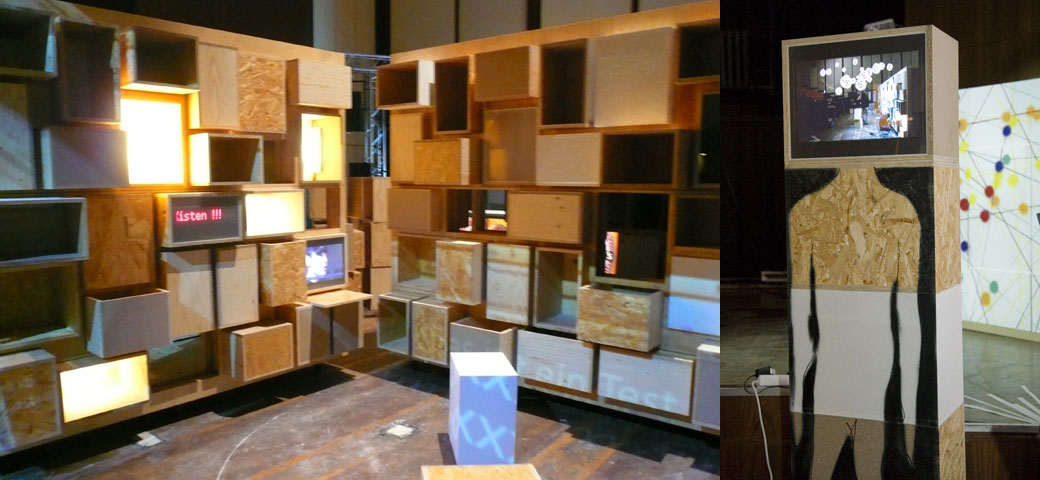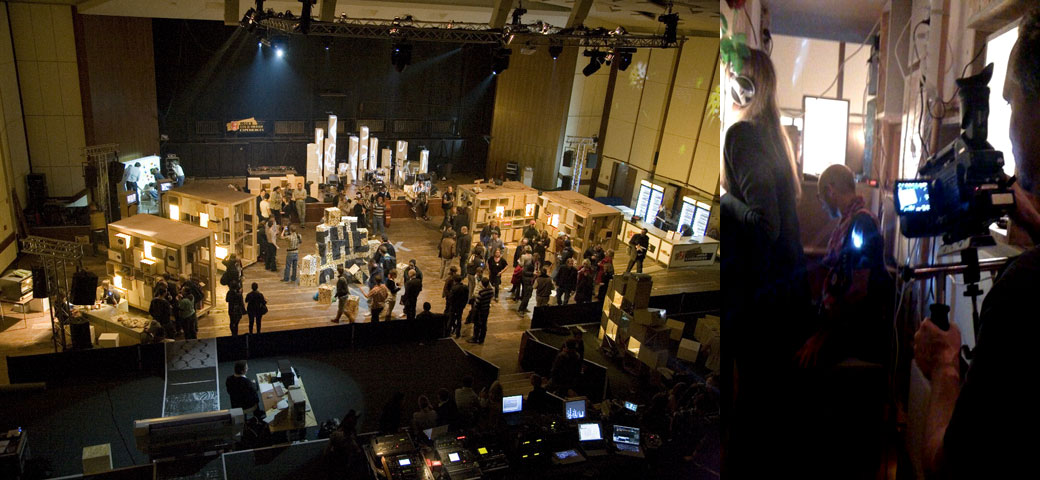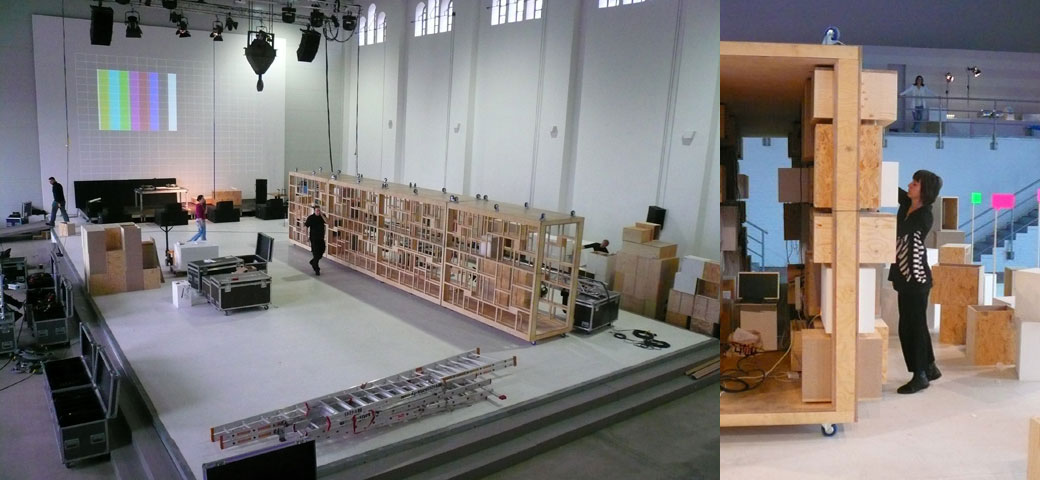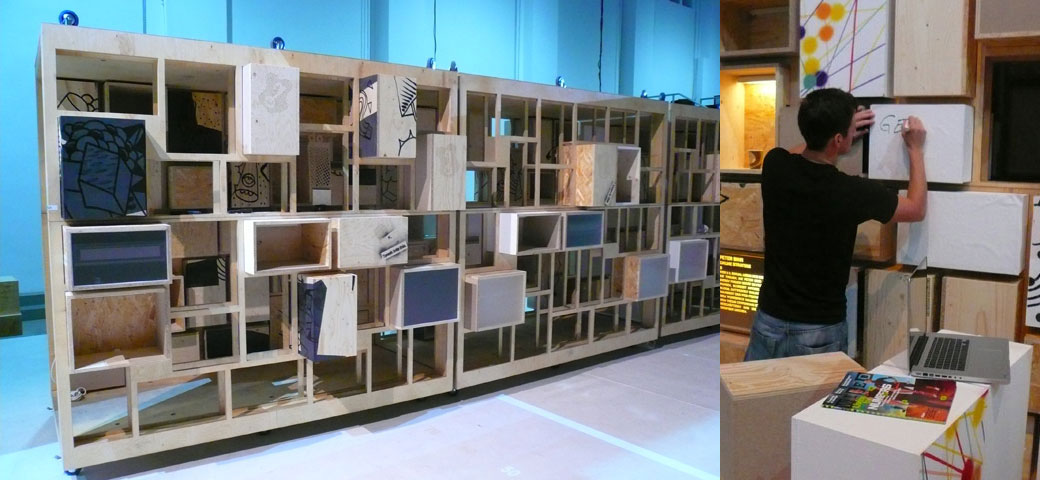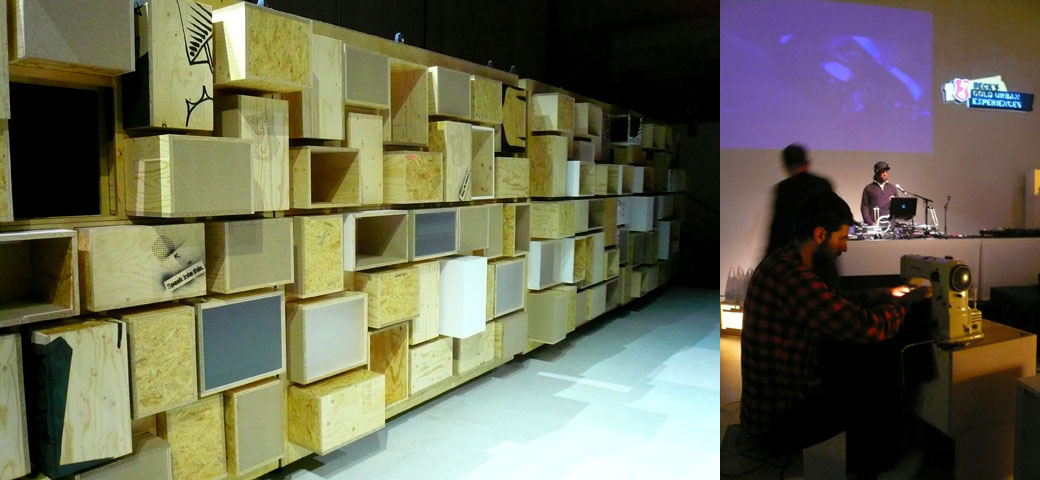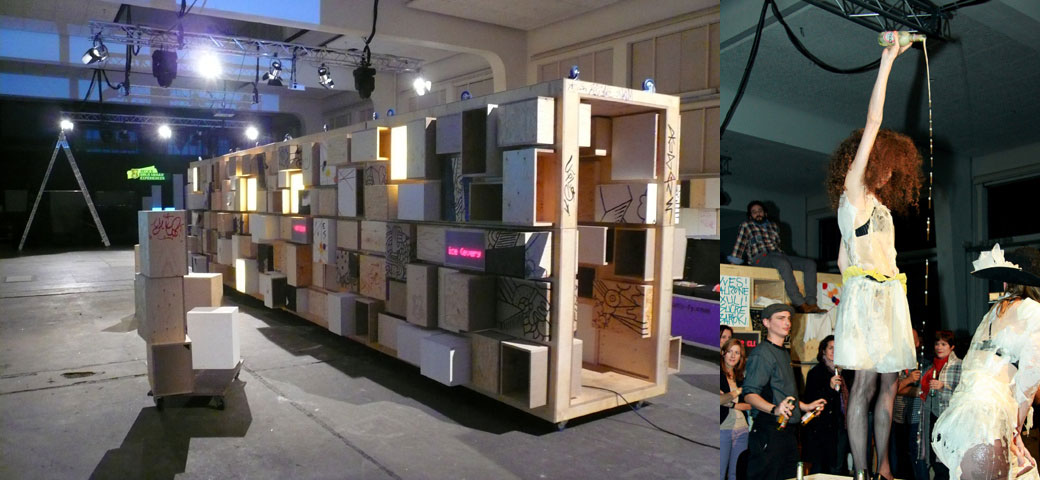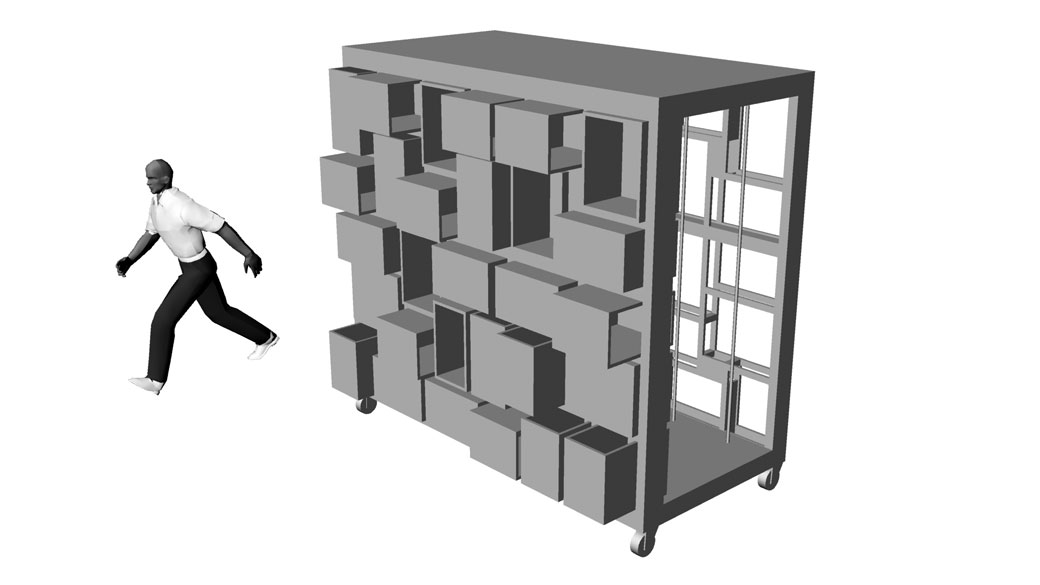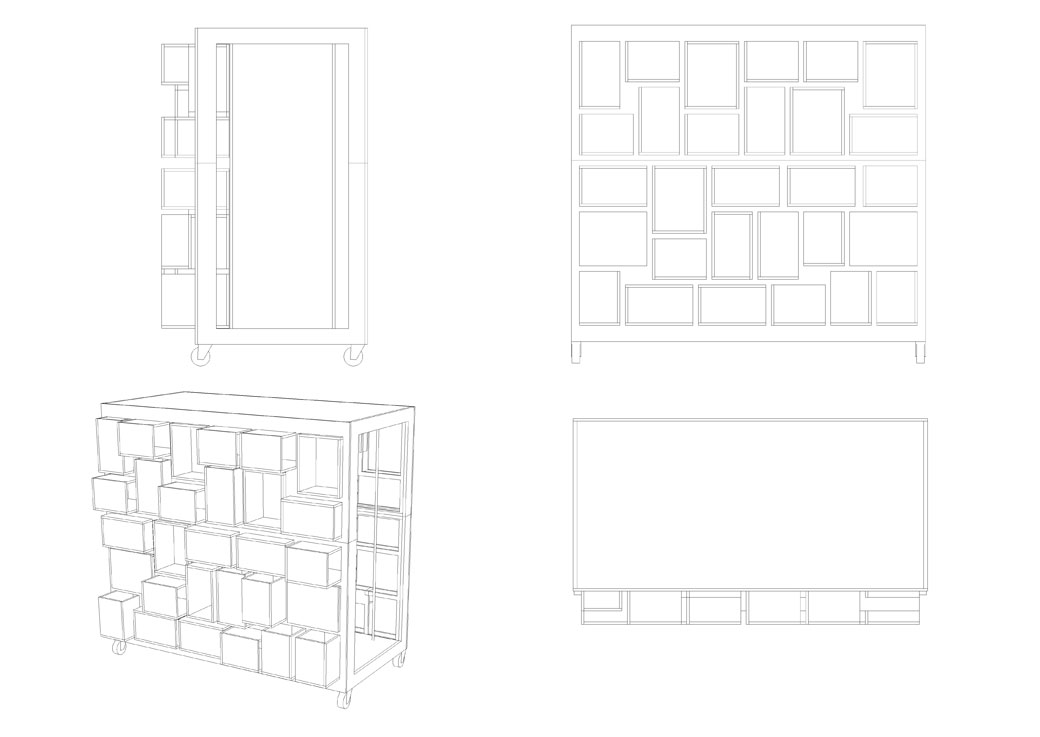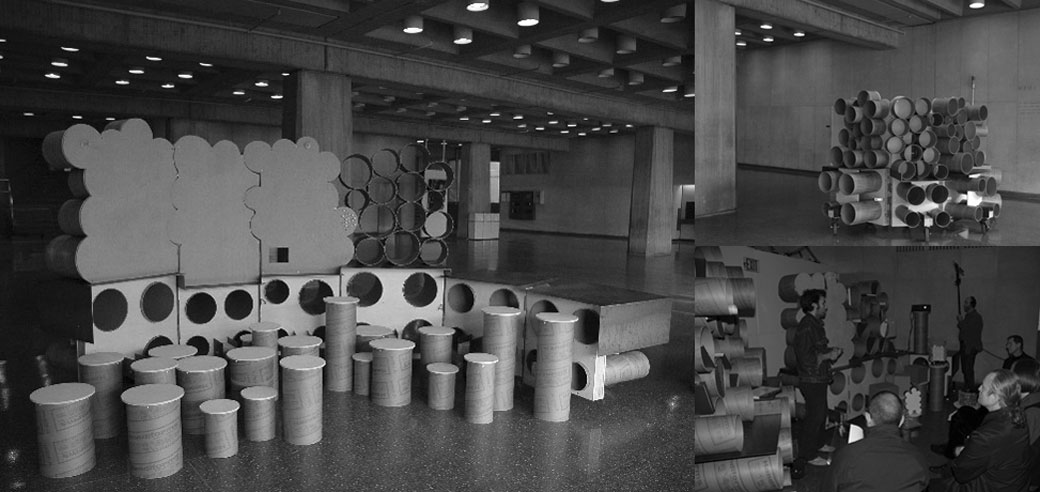The Turtle Two, 2oo9
Turtle Two is the follow-up to the Turtle curatorial infrastructure presented in 2005 as my masters thesis at M.I.T. (please see below for images). The Turtle stems from the Crit Cube by Marlon Blackwell (1993), the relational aesthetics of Jean-Luc Godard in Tout va Bien (1972), and the curatorial and scenographic theories of Frederick Kiesler embodied by his unbuilt Mobile Home Library (1938, Laboratory of Design Correlation, Columbia University).
It is a mobile space and system of modular, ergonomic storage units, transported by a larger mobile module. Their materiality usually resorts to three wood variations, harvested Baltic birch plywood, OSB and particle board, with recycled paper products, and some hot-rolled steel custom components.
In the case of the Turtle Two (and of ensuing versions), the storage box module is designed to serve its users as a step, chair, table, pedestal, bar, shelf, stair, wall, etc. In addition, the boxes may contain programmable features that work as lights, speakers, LCD screens, and specialized equipment containers. The larger module mobilizes the box system. It also serves itself as a space-making device and it functions as such whether full or empty. When empty, it can also become a complimentary surface backdrop for presentations, shelving, pin-up surface, stage-set, audiovisual service space, cat-walk, DJ booth, A/V rack, projection surface, fence, etc. As such, in contrast to most scenographic techniques, they leave no waste. For example, the Turtle Two has an after-life temporarily and permanently in exhibitions and institutions such as the Future Archive (curated by Ute Meta Bauer), Deutsche Architektur Zentrum, Program, District (curated by Susa Husse), Maker Lab, ETSY, and for The Imaginarium (curated by Lukas Feireiss, Tomorrow's Thoughts Today, and Adrienne Goehler), Huttenpalast, and Open Design City (Betahaus), all alternative cultural centers in Berlin.
Again, the Turtle concept offers modular capabilities for events as discursive infrastructure, often blurring the boundaries between users and general public. The Turtles also aim to project a relationship to the urban landscape, from brick to building, a scaled, customizable abstraction of the city. Not unlike a hippocampus, the behaviors enacted through their are encoded into the system; memory to further understand how other versions of the unit can illustrate past environments as they then inhabit future events.
Ever since, I have been able to reproduce various adaptations of it in the forms of the Turtle Three (for ETSY Berlin), Turtle Kompakt (with Lukas Feireiss and Adrienne Goehler), Turtle Five (for Aedes Campus), and Turtle Six (for the Hybrid Platform, Universität der Künste / Technische Universität Berlin).
The Urban Customization Wrokshop was a collaboration with The Product and Silk Relations, taking place in Berlin, Hamburg and Munich. more Information :: Abitare
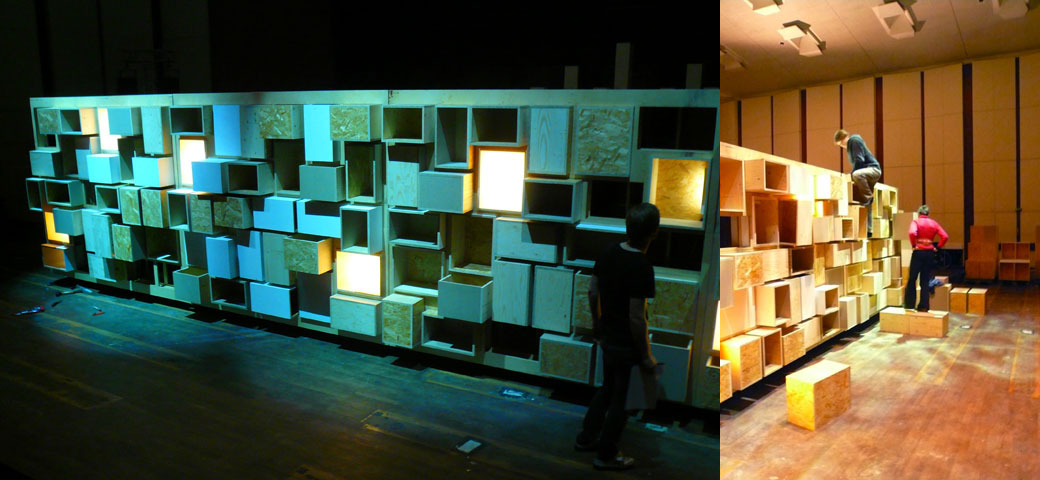
“Harold Rosenberg [The Anxious Object, New York, Horizon, 1964, pp. 61-62] describes how illusionism of this recurrent sort is due in part to urbanization. He writes: The city dweller’s ‘nature’ is a human fabrication - he is surrounded by fields of concrete, forests of posts and wires, etc.; while nature itself, in the form of parks, a snowfall, cats and dogs, is a detail in the stone and steel of his habitat. Given the enormous dissemination of simulated nature through window displays, motion pictures, and TV screens, public and private photography, magazine advertisements, art reproductions, car and bus posters, five-and-ten art, it is plain that in no other period has the visible world been to such an extent both duplicated and anticipated by artifice. Surrounded by artistic copies of presidents, scenes, famous events, we become in the end largely insensitive to the distinction between the natural and the made-up." (continues below)
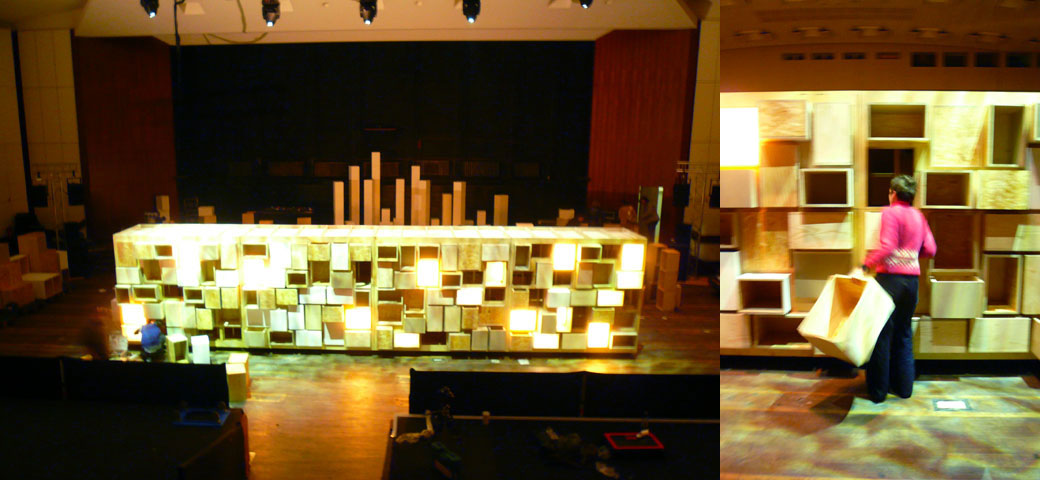
“Replication, modularity, and serialism, aspects of mass-production, have become the norms of daily life; they are part of the way we think. Only in the fine arts does the quest for originality remain a vestige of individualism and specialization. It is the ideological token of the sufficient self. Yet popular acceptance of psychoanalysis makes everyone today an individual, while the phenomenal growth of leisure time in the economy implies that, potentially, anyone (not just artists, or eccentrics) can pursue a personal life-style. And gradually increasing public and corporate support of pure research, arts education, and the performing arts promises more tangible rewards to the intellectual, than isolation in the garret. These changing social circumstances have at least blunted, if not done away with, the special poignancy that once moved artists to struggle to be idiosyncratic [on the pattern of Greek sunkratikos - ‘mixed together’].” - Allan Kaprow, Essays on the Blurring of Art and Life, edited by Jeff Kelley, University of California Press, Berkley, 2003, pp. 141-143
